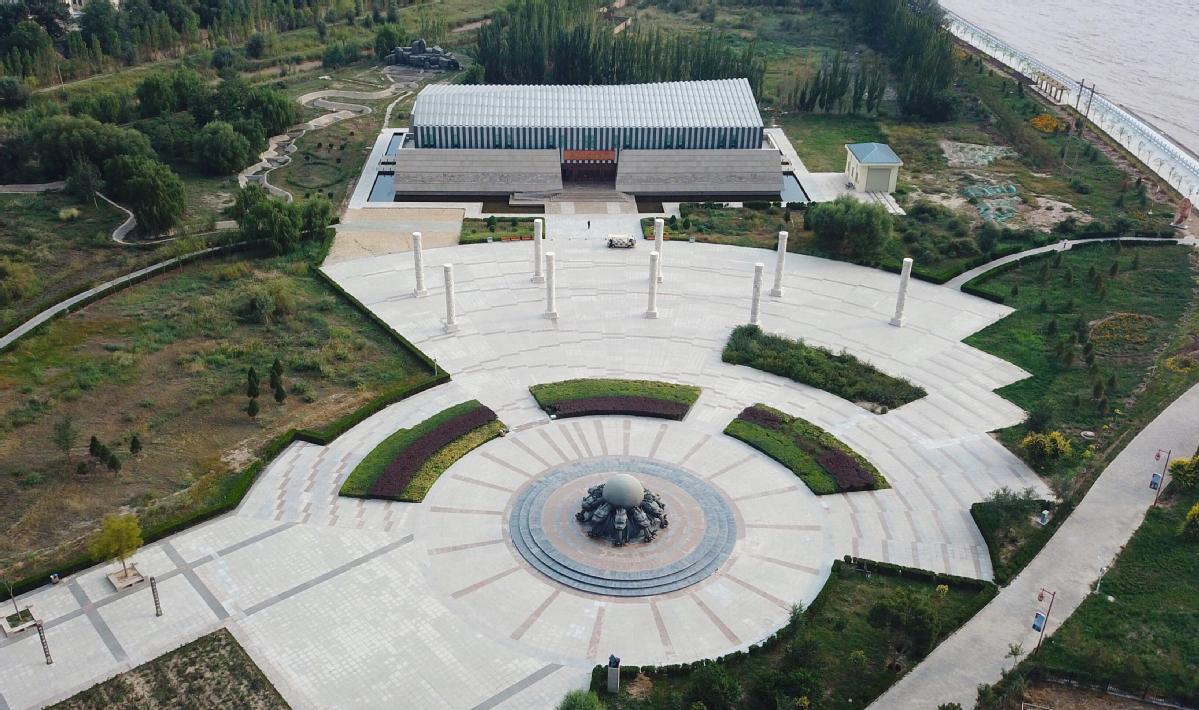Yellow River protection looks to modern methods


YINCHUAN-A rusted shovel, a dusty kerosene lantern and a wornout basket on display in the Ningxia Water Conservancy Museum represent Dong Tiancheng's distant memories of guarding the Yellow River.
Dong lives in Qingtongxia, Ningxia Hui autonomous region, through which 397 kilometers of China's second-longest river flow.
When he took the job as a Yellow River guardian in the early 1950s, Dong only had a shovel and a lantern.
"At that time, our main task was to keep villagers and their farmland safe from floods. It was arduous work, but worthwhile," the 87-year-old recalled.
Back then, Dong and his colleagues had to make round-the-clock patrols of the dike to protect residents from hidden dangers. They sometimes slept in a straw shed by the river on rainy days.
"Every time I stayed in the shed, my hair would get covered with dried leaves," Dong said.
Local residents have survived on and benefited from irrigation farming since the Qin Dynasty (221-206 BC). It was the first ancient Chinese irrigation system in the Yellow River Basin to be recognized as a World Heritage Irrigation Structure by the International Commission on Irrigation and Drainage.
Dong spent more than 50 years guarding the Yellow River.
He recalls tens of thousands of residents taking weeks to build a 100-meter-long cofferdam with straw, earth and stones, to guard against torrential water.
Wu Peng, who works in the Ningxia Water Conservancy Department's canal management office, heard the stories of battling floods with few resources from the elder generations. When he became a Yellow River guardian in the 1990s, flashlights and life jackets were already available.
But with a lack of communication tools, he sometimes found himself in danger on rainy days. "You had to be especially careful even if you could swim," the 41-year-old said.
Nowadays, river guardians like Wu have access to advanced technology and improved working conditions after the country developed a series of water conservancy projects, he said. At his workplace, there is a sealed road and a dilapidated shed has been replaced with a modern courtyard. With an improved sluice gate linked to a computer, staff members are able to control over 50 percent of the water supply released to the Ningxia plain.
Wu patrols the dike twice a day, carrying a shovel and monitoring an app on his smartphone which allows him to upload pictures and videos and ask for help when required. "It's much easier and safer for us," he said.
"I heard that unmanned aerial vehicles have been used to inspect the dikes in some places, and I believe the tools will be smarter in the future."
Dong Tiancheng's son Dong Zirong has also joined in protection of the Yellow River. "I grew up by the riverside, and I know my father's perseverance. People are actually the biggest beneficiaries of river protection," the 47-year-old said.
Xinhua
- Two firms fined 23 million yuan for deadly Jiangxi fire
- Beijing introduces new policies to enhance parks
- Marriage registrations surge in Shanghai following nationwide policy change
- China launches new AI model for agriculture
- China introduces national standard for valuing terrestrial ecosystems
- Government agencies announce regulations of online hiring information





































